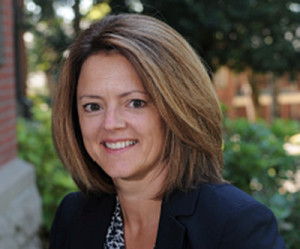 Eye on Education: What was the purpose of the National Eye Care Workforce Study? What were you hoping to find? Why now?
Eye on Education: What was the purpose of the National Eye Care Workforce Study? What were you hoping to find? Why now?
Dr. Coyle: The intent was to provide data for the profession to use for assessment and decision-making in a variety of ways. Since the last workforce study, we have experienced a rapid transformation in health care and the external factors that affect the demand for eye care.
EonE: What do the findings say about the future of academic optometry? For future Doctor of Optometry students?
Dr. Coyle: That the demand for eye care services, whether for optometrists or ophthalmologists, is similar and that the number of ophthalmologists is predicted to decline until 2025. Doctors of Optometry will need to step up to make sure eye care needs of the public are met. Schools need to continue offering an excellent and vigorous curriculum to prepare students for their future.
EonE: What is your overall sense of the study? How it was conducted? The questions asked? The results?
Dr. Coyle: It’s wonderful to have data, to have the ability to rework the data based on the changing realities and other external factors, such as the number of individuals who need care, incidence of diabetes, number of practicing optometrists and students and graduates of optometry schools and ophthalmology programs. These provide snapshots of the workforce.
The study raises more questions, as most studies do. The data collection and methods were sound. The study makes assumptions that only time will tell if true. I wish we had more specific data about where practitioners are located, i.e., specific geographical locations. Is there greater demand in rural areas as we suspect, for example? The report doesn’t tell us that.
EonE: Let’s discuss the survey result that most are talking about: Respondents say they could see an average of 19.8 additional patients per week without adding hours to their practice schedule. What is your response to that? How will academic optometrists/faculty in optometry schools address this issue with their students, and will curricula change or adapt because of this?
Dr. Coyle: The study doesn’t compare the age of the practitioner and the response to that particular question. Are the respondents who report they could see more patients younger and still building their practice? Or are they older and more established? Do they even want to increase their daily schedule? Is there excess capacity in rural cities vs. major cities?
This is an opportunity to look at best practices and identify practitioners who don’t have excess capacity. What are they doing differently?
EonE: In light of the entire survey, what would you say to a potential optometry student? Parents? Current student? Recent graduate?
Dr. Coyle: My opinion of the profession is exactly the same as before. Optometry is a great profession and the study reinforces the diversity of eye care services that Doctors of Optometry provide. I view the study in a positive light.
EonE: Will another study be conducted in the future?
Dr. Coyle: Yes. We owe it to the practitioners to constantly examine what workforce demands are and could potentially be in the future.

